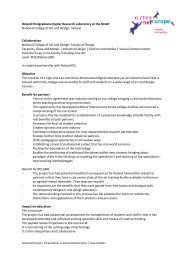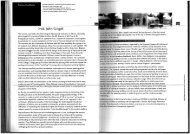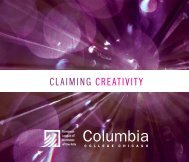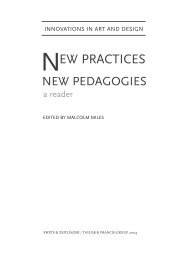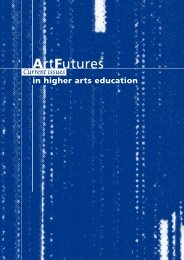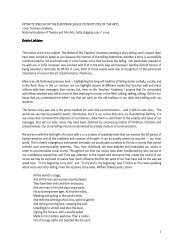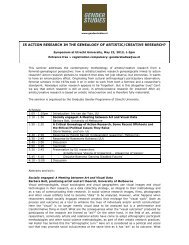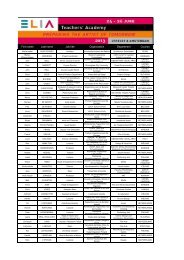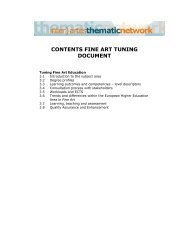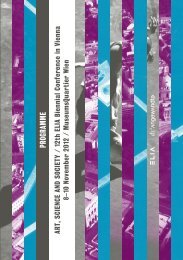part_1.pdf - Elia
part_1.pdf - Elia
part_1.pdf - Elia
Create successful ePaper yourself
Turn your PDF publications into a flip-book with our unique Google optimized e-Paper software.
MANFREDO TAFURI, AND JEAN PAUL SARTRE WALK INTO A BAR<br />
AND ORDER HALF A GLASS OF BEER<br />
(Or, Operations of Substance and Meaning for the Beginning Design<br />
Student)<br />
In the slice of time directly before a design concept, there is insight. If we<br />
attempt to slow the camera down, as Benjamin 26 might say, to zoom in and<br />
pry open this slice, we can occupy that space where insight is formed and<br />
take a look around. The journey is crucial, or rather, the stop. Long before<br />
the destination is reached, before the settling dust catches in light aimed at<br />
the nostalgic wreck of a design studio after the review, before supplies are<br />
re-supplied, before layers of trace and debris pile up, before even the design<br />
concept is conceived, we stop the car and get out to go for a walk.<br />
Before the there, there is a here. Students are often confronted with the<br />
production of a design concept or strategy: a guiding premise through which<br />
decisions are made and against which ideas are tested. It is a <strong>part</strong> of the<br />
process that guides how their design will unfold and structures how a project<br />
will progress. But implicit in this production is a pre-condition, a sort of<br />
accumulation or repository of raw material out of which the design concept is<br />
to be constructed. Before the design concept can be articulated and acted<br />
upon, there is (must be) something else. How do beginning design students<br />
collect this raw material? How do we teach students to be insightful about<br />
the built environment—both in terms of how they see the world around<br />
themselves and in how they begin to structure proposals for design, for how<br />
design is to take place?<br />
For how design is to take place is a very wide question. That spark,<br />
revelation, that discovery of insight that can be formulated into a design<br />
concept begins to answer this question for the design student. It allows a<br />
student to conduct a design process, rather than solve a problem and allows<br />
for a clarity of thinking toward design proposals. Confidence is gained<br />
through ownership of ideas where, rather than trying to hit a target, the<br />
student creates the premise.<br />
1) Frameworks of knowledge<br />
Architecture emerges from the didactic, from how it is taught to how it<br />
teaches. From Alberti’s early treatise to Wagner’s “Guidebook to His<br />
Students” and beyond, architecture, its instruction, and what it instructs have<br />
Notes<br />
26<br />
Benjamin, p 235-237.<br />
162



